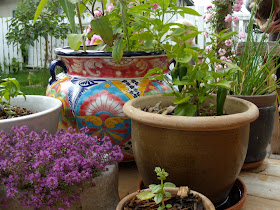My last couch was saved from a back alley in Spruce Avenue. It was extra long, super pink and only half of it fit in the hatchback of our small Yaris.
A few years later I traded up. I fell in love with another vintage special at the Bissell Centre Thrift Shoppe. She was saggy, dusty and, when you found yourself snuggled in a fort built out of her cushions you realized, she was very stinky. But when I sat down, her arms curved familiarly around me. Her brown brocade flower pattern shouted, “Look at me!” I couldn’t leave her at the shop, so spent $50 to bring her home.
My husband Mat wasn’t so sure about this new seating arrangement. Pink hadn’t been his favorite couch colour but at least it had no pattern to shout at him from the living room. I convinced him that we could make the couch fit. I had a vision.
My vision was finally realized over a long weekend, initiated partly by the aforementioned smell and partly due to a strong hormonal need to nest. Here’s what happened:
- I emptied the cushions of their disintegrating foam then soaked the covers in a tub of vinegar overnight. When it came to rinsing them, those cushion covers required 10 minutes under the hard stream of the tap before the water ran clear.
- After buying 4-inch thick High Density Foam (bought on sale at Fabricland), I cut the pattern of each cushion cover out, then wrapped and glued on thin quilt batting to soften the edges of the foam (I used spray-on glue).
- Next I squeezed the new foam into the old covers and managed to pop all four zippers, leaving me no choice but to sew up the covers.
- As I worked on the cushions, Mat feverishly blasted the couch with an upholstery cleaner rented from Save-On Foods.
- Then I painted the wood parts a Robin Egg Blue (I love this colour but am not brave enough to do a whole wall of it).
- I used liquid fabric glue to fuse on new trim. Beaded blue trimmed the bottom and a dark brown trim replaced the cream around the arms and back.
- I sprayed everything with Scotch Guard (A decidedly non-environmentally friendly thing to do but you didn’t see what I saw in that tub!)
- Finally, I recovered my throw cushions using silk fabric I had found at a liquidation sale and buttons from Value Village.









































